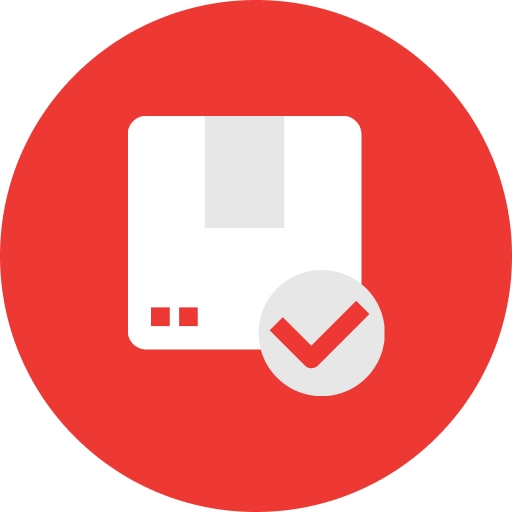Ensuring Security in Graphic Design Projects: Steps to Safeguard Projects | Best Graphic Design Security Measures | Duplex Technologies

Posted By : Ambesh Mishra, Posted Date : Aug 31, 2024
Introduction: Ensuring Security in Graphic Design Projects
Ensuring security in graphic design projects is paramount to safeguarding the client’s data and building trust. Designers usually work with sensitive information, including logos, trademarks, and branding resources. Such information, if in the wrong hands, results in acting as the gateway to organized theft of intellectual information, financial loss, and humiliation. Also, insecure design files can be prone to hacking by unauthorized people, malware, and ransomware attacks. Therefore, from a security perspective, designers can protect their clients’ property, avoid leakage of information, and guarantee the authenticity of their work. This in a way establishes credibility as well as trust, and this is a sure way of ensuring that clients are retained and the business is sustainable. In this blog, we will discuss further security in graphic design, including the security measures, instruments, and approaches needed to safeguard your client’s information as well as your own business.
Table of Contents
What is graphic design security?
Graphic design security means safeguarding the vulnerability of the project to unauthorized access, use, or theft of information like the client’s logos, trademarks, and other branding materials. It can result in intellectual property theft, breach of confidentiality, and adverse effects on a designer’s reputation. The risks related to security are also able to affect files of designs, and this may lead to changes that are undesirable or manipulation of designs, and this may lead to losses for a designer’s business and distort relationships with the clients. Given below are some of the terms related to the same:
Intellectual property theft | Graphic design security
This involves a third party utilizing and/or duplicating a client’s logos, trademarks, or branding material without consent. This may result in a loss of money and damage to the reputation of the client. Using stolen information is easy and can be used for evil intents.
Unintended Disclosure | Graphic design security
This is a situation whereby client information or files containing project designs get into the wrong hands, usually through negligence. It could be through emails, sharing of files or work online, or through different online media. Disclosure also results in a breach of confidentiality and leads to repercussions on the company’s reputation.
Design File Tampering | Graphic design security
Design file manipulation is a process whereby unauthorized alterations are made to design files in a manner that alters their information content. It can occur through hacking or break-in, or when someone deliberately alters the information. It can result in design errors and inconsistencies, and it hampers reputations.
Loss of confidentiality | Graphic design security
A privacy violation happens when a client’s information is disclosed or released to third-party individuals without their consent. This can occur via theft, leakage, or hacking of personal data in an organization’s databases or information systems. The cases dealing with that aspect may jeopardize the client’s confidentiality and their relationship with the firm.
Copyright Issue | Graphic design security
Copyright matters come up when someone has used someone else’s copyrighted material in their work without authorization. This can be anything ranging from images that are used, the type of font that is used, or even other features of the design. A breach of copyright can have certain legal ramifications as well as a negative reflection on the company’s reputation.
Design Piracy | Graphic design security
Design piracy refers to a situation whereby the design work that has been copied through some legal means is used or marketed in the market. This can be logos, branding materials, or even designs in their entirety. While others may take equal parts of aesthetic value and practical usefulness, others fall somewhere in between with equal measures of aesthetic appeal and functionality. There are costs associated with piracy including financial costs, reputation costs, and legal costs.
Graphic design security best practices
Graphic design security best practices are the process of protecting the design files, software, and tools from theft, attacks, or unauthorized access. By utilizing these practices, one can prevent their designs and files from damage. These graphic design security practices are also used to safeguard the data and information from malware and ransomware. Given below are some practices for ensuring security in graphic projects:
Secure your files through encryption, and always transfer data securely | Secure graphic design projects
File encryption safeguards the files from being accessed by people other than those who have been granted permission to access them. Employ secure transfer methods of files, such as FTPS or SFTP. This makes it possible to keep files secure and guarantee that they have not been altered in the process of being transmitted.
Establish backup routines and a mechanism for versioning | Secure graphic design projects
Archiving backs up files so that they can be restored in the event of loss or terms of damage. Version control enables the identification of updates to the files as well as modifications made to the files. This makes it possible to revert designs should one want to go back to a particular previous design of the product.
Avoid opening emails or clicking related links with attachments | Secure graphic design projects
Never open email attachments and links because, most of the time, they may contain viruses or malware. It is highly discouraged to open an email attachment unless it is from someone you know, and only then click on any links after confirming they are safe. This goes a long way in avoiding such incidents as phishing and the introduction of destructive malware into the network.
Store data in secure storage devices and ensure that they are discarded responsibly | Secure graphic design projects
Exercise the use of secure storage devices such as hard disks, which are separately erasable and contain encryption features. Disposing of devices by wiping or destruction is the proper way of doing so. This helps in preventing the exposure of important information to different people without permission.
Report signs of suspicious activities as soon as they are observed | Secure graphic design projects
Recurring scanning for any signs of unlawful activities in the systems or files. Inform the respective authorities in case of any attacks or any kind of breach. This aids in keeping and managing the security breaches within the level that causes little or no impact on the performance of the business.
Update software and operating systems regularly | Secure graphic design projects
Safeguard configurations and components of computers, operating systems, and other applications with the newest security patches. This rectifies vulnerabilities that hackers can capitalize on to exploit the computer systems. Maintaining control implies periodic updates so that systems are protected.
Utilize good antivirus programs and check the files now and then | Secure graphic design projects
Install good-quality software to check through files and systems from time to time. This alerts the user to the presence of a virus and deletes it to avoid compromising the files and systems on a computer. This way it is possible to check for viruses regularly, hence having the systems free from viruses.
Understanding graphic design security with some real-life case studies
Through these case studies, we identify several security issues in graphic design projects, including access control, encryption, backups, and security awareness training to ensure the security of client information.
Case Study 1: Ensuring Security in Graphic Design Projects
A graphic design firm was working on a project for a financial client, and in a design that is considered creative work, one of the firm’s designers posted to his or her social media account numbers related to the client’s project.
Solution: They should, therefore, encourage the use of a strict social media policy besides conducting monthly security awareness to its employees, and use of project management tools where access controls are installed to deny unwanted sharing.
Case Study 2: Ensuring Security in Graphic Design Projects
A freelance graphic designer lost her laptop, which contained clients’ files and design works.
Solution: Store data in the cloud with encryption, put a backup process in place, and make multi-factor authentication for all design applications and communication interfaces with clients.
Case Study 3: Ensuring Security in Graphic Design Projects
An online collaboration platform being used by a design team was penetrated, and the client projects coupled with the intellectual property were violated.
Solution: Security test and update frequently, ensure the use of a safe and secure social tool with authentication and authorized-only measures, and develop an adequate form to take in case of a security breach.
Case Study 4: Ensuring Security in Graphic Design Projects
In this particular case, one of the clients of a graphic design agency received an email with an attached fake invoice that seemed to have been sent by the agency.
Solution: Use SPF for sender policy, DKIM for domain keys, and implement DMARC for domain-based message authentication; Passenger: educate clients to be wary of phishing emails and use secure invoicing software with encrypted accounts and at least two-factor authentication.
Conclusion
Ensuring security in graphic design projects is important to safeguard the client's data and ideas and build trust with the client. As cyber threats continue to rise, graphic designers have to pay heed to issues like encryption, access privileges, and secure interfaces for discussion or file sharing. Knowledge of graphic design security is also crucial in ensuring that user data and company reputation are protected against malicious actors. When security is given high priority, client assets can be protected from unauthorized access, the services can be made more secure and trusted by clients, and designers can remain relevant in the competitive market. A lack of graphic design security best practices can lead to grave impacts, which makes it crucial to incorporate security in all the designs.




















































































